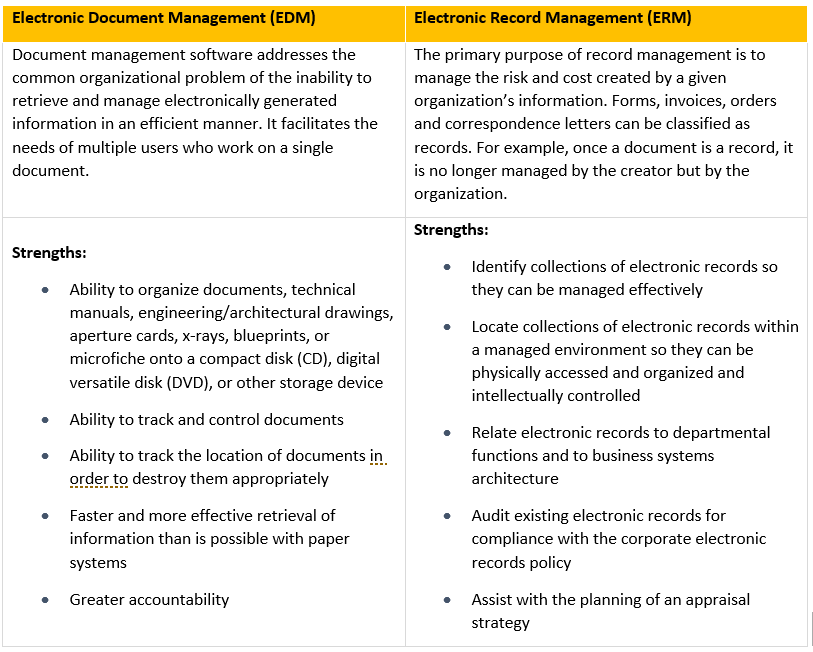Best Practices for Managing Electronic Records
Technology has greatly expanded the methods of creating, editing, maintaining, transmitting and retrieving records. From creation to disposition, records in electronic recordkeeping systems may now utilize a variety of media. An example of an electronic recordkeeping system is one in which a personal computer generates the original records, which are subsequently stored on a secondary electronic resource. While paper copies of the electronic records may be printed for distribution, the original records are transferred electronically.
After a specified period, the inactive records are transferred to condensed electronic long-term storage and the original media upon which the records were stored may be erased and reused. Other electronic records may be created, manipulated, maintained and disposed of on the computer without ever being produced in hard copy.
Paper forms traditionally have been the primary medium for conducting business transactions, in both private and public environments. With the explosive growth of internet-based transactions for commercial and retail business, the electronic form is becoming the primary user interface—the visual record—when transacting electronic commerce. As such, the graphics and text of the forms, as well as the information that is entered into the forms, compose the "record" of transacted business. Records of electronic transactions will have an important role as evidence in legal disputes and regulatory audits.
With the rapid advancement in business systems, practices and procedures must be established to guide public and private entities through the potential minefield of electronic records management issues. What the courts require and auditors expect—therefore what commercial and public entities should be striving for—are systems and processes that are accurate and reliable and, as such, are viewed as trustworthy in the management of their electronic transaction records.
Managing records and documents refers to the process of controlling electronic or hardcopy documents over the course of their lifecycle—from inception through permanent retention or destruction. The activities in this process ensure the availability of documents to people who need them, while at the same time, protecting them from access by people who don't. The activities also ensure a company's compliance with regulations affecting its documents and reduce the legal exposure documents present when they are held past their useful life. In the business world, this process is usually referred to as document management. Although some use the terms "document" and "record" interchangeably, "record" historically has referred to a paper document.
The Difference Between “Electronic Document Management” and “Electronic Record Management”
 You can find more information about IT performance risk by accessing the following resources on KnowledgeLeader:
You can find more information about IT performance risk by accessing the following resources on KnowledgeLeader:
